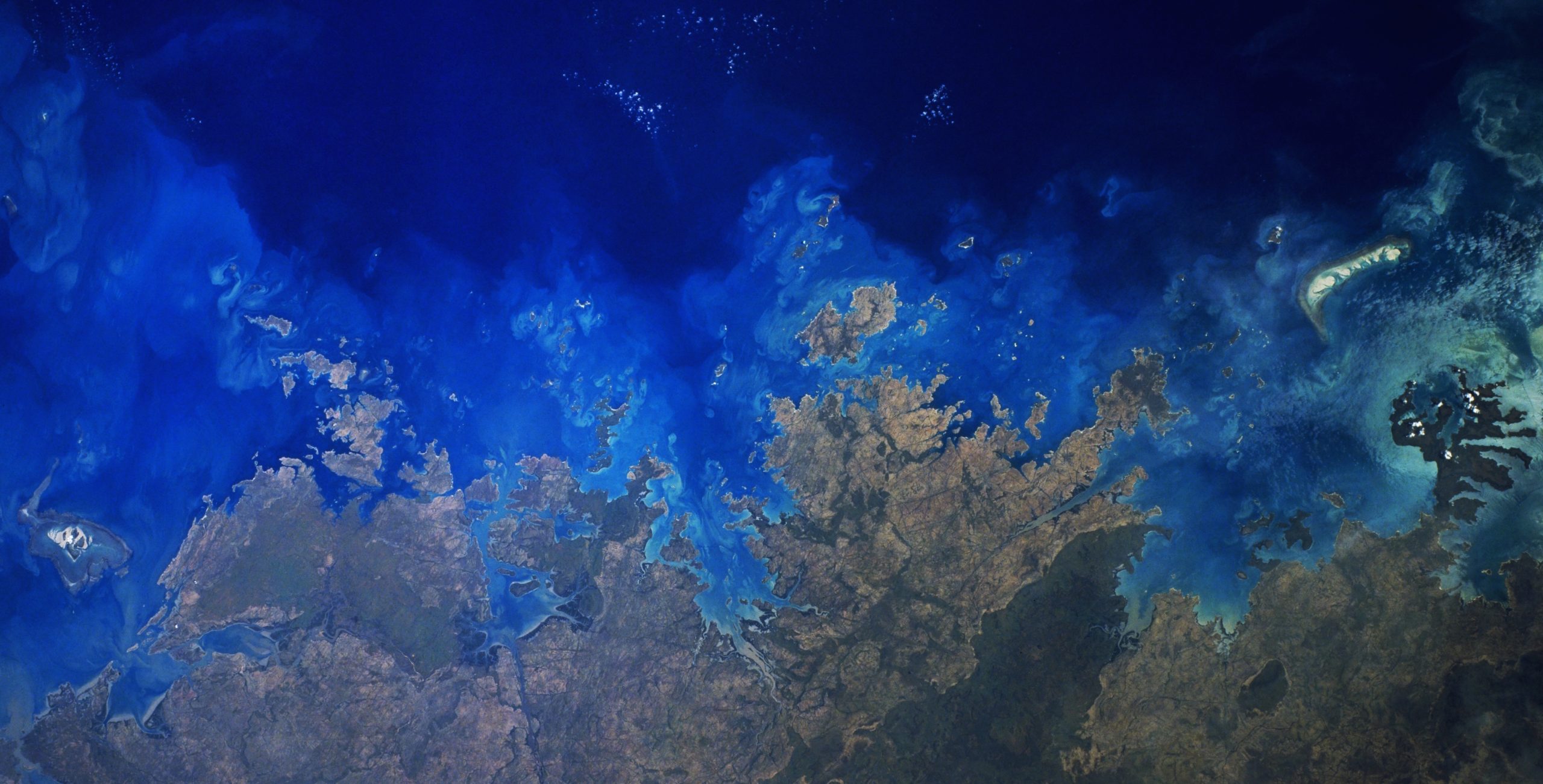Australia’s Extremophile Coral Could Be Key to Saving the World’s Reefs
These resilient corals can handle conditions that would decimate other species.
Article body copy
Roughly 150 kilometers off Australia’s northwest coast is a cluster of hundreds of tiny islands around which one of the world’s hardiest coral populations is quietly thriving.
During the spring tide, the water around Western Australia’s remote Bonaparte Archipelago drops so low that the corals covering the sea floor jut above the waves for hours at a time. In the summer months, these corals can face water temperatures above 32.2 °C, dropping to 26.5 °C in winter. Even the water in which they live is often so choked with sediment, algae, plankton, and other microbes that life-giving sunlight can barely penetrate the surface.
Any one of these challenges would be enough to devastate most of the world’s coral.
Yet in 2007, a team of researchers led by biologist Zoe Richards discovered no fewer than 225 species of coral here. According to a recent study in the journal PLOS One, these hardy corals show no signs of bending under the pressure of what should be an inhospitable habitat.
From the shocking pinks and yellows of the Great Barrier Reef to the unremarkable browns and grays of the Bonaparte Archipelago, coral get their color from the tiny photosynthetic algae, called zooxanthellae, that live inside their tissue. Zooxanthellae and coral have a symbiotic relationship: the algae feed the coral and get shelter in return. Yet when conditions get too harsh these little algae are expelled from their coral homes, leaving the coral bleached white and starving.
Without their algal tenants, corals are more susceptible to disease, and sickness can rapidly spread through a bleached population. Around the world, in reef after reef, this ghastly process has been playing out again and again.
But the Bonaparte Archipelago reefs? By all accounts, they’re doing just fine.
“During our surveys, the Bonaparte corals showed no signs of being stressed, and this was fascinating given intertidal coral communities in other parts of the world are increasingly impoverished due to bleaching and sediment impacts,” says Richards.
One of the secrets to the Bonaparte corals’ success, Richards’s team writes, is that there’s only a small amount of pollution running off the sparsely populated coast. With no nearby urban centers to speak of, and a regional population of just over 34,000 people (as of 2011), the human impact on these waters is minimal. Which is good, because these corals have enough to deal with.
The researchers suspect that the corals have evolved super-efficient mucus and tissue production in response to their harsh environmental challenges. The corals might also house resilient and abundant strains of zooxanthellae. And, perhaps, they’re just really great at reproducing. “Research has begun on numerous lines of investigation including the symbionts and pigments,” says Richards.
Only a handful of coral populations around the world have managed to adapt to similarly inhospitable conditions, such as those in the Western Caribbean and the Ofu Island lagoon of American Samoa. In 2013, scientists were stunned to find a 28 square kilometer reef off the coast of Iraq with corals that could withstand water temperatures that fluctuate between 14 and 34 °C, and salinity levels far above average. The Iraqi corals survive thanks to their huge, solid, and heavily calcified skeletons.
But this is the hardy minority: the rest of the world’s coral are in deep, deep trouble. According to Richards, one third of coral species face an elevated risk of extinction. A 2011 report by the World Resources Institute predicted that the combined impacts of ocean warming and acidification would see 90 percent of the world’s coral reefs facing extinction by 2030, expanding to nearly every single reef on Earth by 2050 if no significant action is taken.
Yet Richards and her colleagues draw hope from their discovery. The extremophile populations of the Bonaparte Archipelago and elsewhere show what coral are capable of. If these adaptations can be harnessed, some scientists suggest it might even be possible to help more sensitive species cope.
“If we can decipher the molecular signature for resilience in these corals, this information will inform which aspects of the genome are most important for identifying resilient lineages in other parts of the world,” says Richards. Potential action plans include seeding these hardy corals into the reefs that need them most, such as the Great Barrier Reef, or transplanting genetic material from resilient corals into struggling populations.
But if we’re being realistic, says ecologist Michael Risk, who was not involved in the discovery, big plans to help coral adapt to climate change and ocean acidification will do little to alleviate the global coral decline without an astronomical investment of people and resources.
The geologic record shows many instances where coral reefs have been wiped out and rebounded, says Risk, but “the rate of change in today’s climate is at least an order of magnitude faster than any seen in the past.”
“There is not a chance in hell that corals can adapt quickly enough,” he says.
So is it time to start thinking about life after coral? Possibly. For many, accepting that outcome will not be easy. Yet without a large push to stop warming in its tracks, we’re left hoping that the hardy populations in the Bonaparte Archipelago and elsewhere are harboring the key to some solution we’ve yet to discover.

